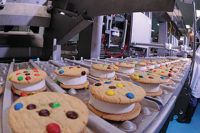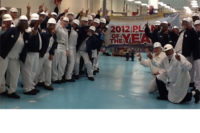In the convenience-store channel, Mars felt retailers weren’t maximizing ice cream novelty sales due to inefficient category assortment. So in 2010, the company commissioned a study to analyze consumer behavior and retail sales. Written by independent management consulting firm Dechert-Hampe, the study found that convenience stores that practice category management and offer a store set with consumers’ top choices can grow ice cream novelty sales by up to 60%. Category management is the practice of offering the best-selling items (regardless of the manufacturer), as opposed to carrying items from a single manufacturer.
The study also found that ice cream novelty shoppers visit small outlets three or more times per week, on average. They are more likely to be females with a higher household income than the average c-store consumer, with 80% buying ice cream there once a month. Not surprisingly, the research has helped Mars compete in the channel, Hall said.
Decision-making is guided by Mars Inc.’s Five Principles:
|
Veteran employees (and those with more recent tenure) attest to being in meetings where the principles have been invoked. The tenets are printed on posters that hang in conference rooms. Mutuality, for example, refers to shared benefits. This means, “while we must try to achieve the most competitive terms, the actions of Mars should never be at the expense, economic or otherwise, of others with whom we work,” according to an explanation on the corporate website. The sales team has walked away from potential partners when it did not see a clear shared benefit, said Hall.
Building the best bar
While ice cream pints are co-packed by a partner, Mars makes a variety of ice cream novelties in Burr Ridge, “from snack size to full size,” says Thompson, the marketing director. (See related article on page 58.) The aim is to recreate in a novelty the essence and experience of the candy bar brand. Thus, for the Snickers ice cream bar and cone, Burr Ridge uses the same peanuts that go into the candy bar. It makes peanut butter from these nuts and adds it to the ice cream mix. Mars also makes its own caramel (no one does it better, says R&D director Winward). Naturally, the chocolate used in Mars ice cream and candy is the same. The company processes its own chocolate “from bean to bar,” Hall says.
The company prides itself on its use of premium ingredients (including Madagascar vanilla) to make a premium product. Hall noted that the company makes “real ice cream, not frozen dairy dessert.”
Although Mars Inc. is a multibillion-dollar global enterprise, managers in the ice cream division regard themselves as players in a small entrepreneurial company. They energetically speak of bringing to market new products. The division takes a 360-degree approach to product development, says Hall. Key touch points (meaning where the consumer interacts with the product) include the images and text on the box containing the treats, the wrapper around the product itself and sensory cues. Mars aims to strike all five senses with visually appealing novelties that have a satisfying crunch when bitten into (sound and touch), a tantalizing aroma (smell) and delicious taste.








